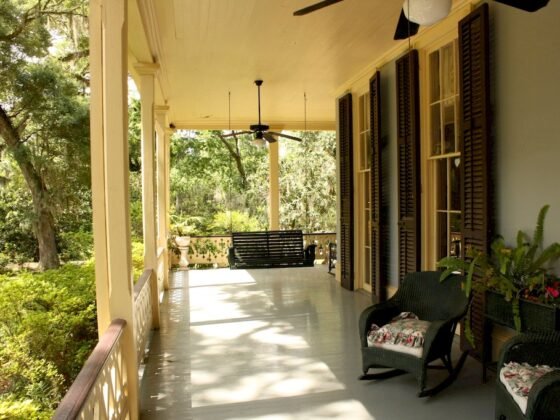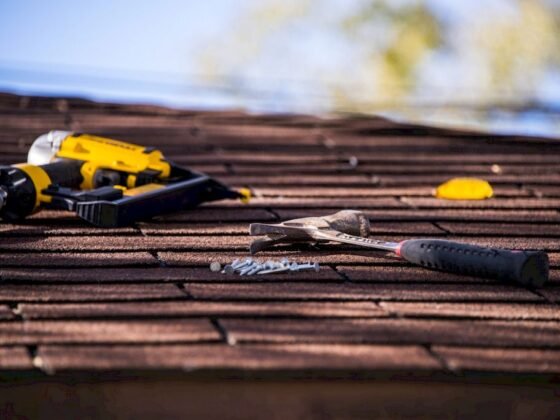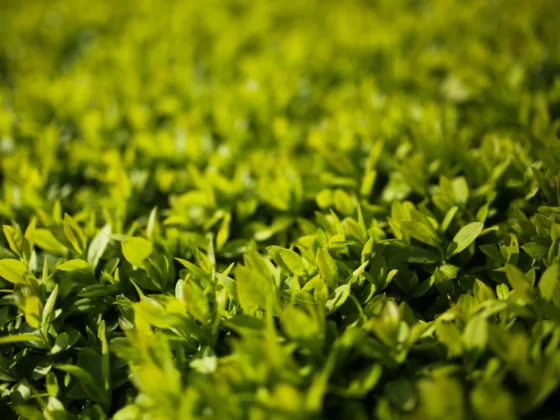Table of Contents Show
How to Use Renewable Energy — Renewable energy is the energy that we find in and receive from nature, the energy we don’t have to create – it is the energy we collect from natural, renewable resources. Some of those resources are the sun, rain, wind, waves, and geothermal heat.

How to Use Renewable Energy in Your Garden
Renewable energy may sometime in the future replace all the artificially produced energy we use, but for now, it only makes a part of our overall energy consumption.
There are countries that have set their goal and are striving to become completely sustainable, i.e., to satisfy 100% of their electricity needs with renewable energy.
Renewable Energy Nowadays
The world is more focused than ever on reaping the benefits of renewables since they can help mitigate the negative effects we have left and are leaving on our climate, it can decrease our carbon footprint, emissions of greenhouse gases, and reduce waste and pollution.
Everybody can take their part in turning to renewables, or, as it is sometimes called, “going green.” We can start slowly, from our own homes.
Maybe you are already familiar with solar possibilities when it comes to powering your home, and now you want to take it a step further – outside to your garden.
Maybe you are only starting to get informed on renewable energy and want to start by applying some of that knowledge to your garden first.
Whatever it is, here are some ideas and ways of making use of renewable energy in your garden.
How to Make Use of Solar Power in Your Garden
Sustainable Irrigation
A relatively new and very useful innovation when it comes to farming or gardening is a solar-powered irrigation system.
When thinking about it more closely, it makes perfect sense to combine your watering needs and solar power.
Your plants and vegetables need the water most when the weather is hot, dry, and sunny, and it is exactly with the help of the sun that this irrigation system functions best.
As opposed to the usual diesel-powered pumps that are connected to an engine or the local power grid, this kind of system consists of solar pumps.
These solar pumps come equipped with solar cells whose main function is to absorb the solar energy from the sun and convert it into electric energy.
This conversion is done with the help of a generator, which will then pump the water into your garden.
The amount of water that the system pumps is set according to your plant’s needs, so they will receive just the right amount, without wasting power or water.
The system is automated and efficient and can save you time, money, and energy.
When it comes to these pumps, the most expensive part is the amortization, i.e., buying and setting them up within your irrigation system.
But when it comes to operating costs, there are basically none, apart from the usual maintenance costs, but those are inevitable in any system.
The energy these pumps use is completely natural and free, which makes this system a smart long-term investment.
Lighting Solution
Solar power can also be used to light your garden or to keep it warm. If you want to enjoy your garden at night and want it to be seen, then install some solar lights in or around it as opposed to using electric bulbs and wasting electricity.
They are easy to find and buy, as well as to install. You don’t need any additional wiring, and you don’t need to worry about your electricity bills.
Simply place the lights anywhere you want, and they will do their job. The sun will charge them up during the day so that they can light up your garden at night.
Solar Panels for Greenhouses
If you live in a colder area where it is not easy to have and maintain a garden, or you simply want to have it in a closed space, then the best solution is a greenhouse.
You can grow and maintain your plants and vegetables just as easily in a greenhouse or some other closed space where there is enough sunlight.
Growing plants in closed spaces, however, requires a lot of energy and electricity because you need to heat it and reach a perfect temperature for plant growth.
Using solar panels as your source of energy, on the other hand, does not require electricity, nor does it waste energy and money.
Solar panels are the best sustainable and environmentally friendly solution. Simply install them on the roof, making sure they are positioned right, towards the sun, and not overshadowed by some other objects.
The number and size of the panels will vary depending on the size of your greenhouse, but you will certainly need fewer than you would for an entire house.
Read Also:
Rain as a Source of Renewable Energy for Gardening
We all know that water is a very valuable natural resource and that there is no life without water.
It is precise because of that, that we should also try to preserve it as much as we can and not waste it, because there are parts of the world with limited access to clean, potable water.
Rainwater is our renewable resource when it comes to water, and it can be very well used in gardening.
Collecting Rain Water
Rain barrels are a common and very efficient way of collecting water, a popular sustainable practice among gardeners. They can be used simply to collect water which you can later use to water your garden manually.
An even more efficient and energy-saving practice of watering is a drip irrigation system. It saves water and time on its own, but even more so if you connect it to your rain barrels.
The water from the rain barrels will be pumped into the system and towards the plants, and, depending on their needs, each will receive the amount of water it needs.
Preserving Water
When it comes to preserving water, it is always best to plant your plants in groups, depending on their specific characteristics and needs, i.e., how much sunlight they need in order to grow and how much water they demand.
This way every group will receive just as much as they need, without wasting water and energy.
Place those that need more watering in one part of your garden, and those resistant to drought in another. This way, water will be used effectively and not be wasted. Be careful to water the plants only when they need it.
Planting Native Plants
Additionally, there is one other practice that makes gardening easier, as well as more efficient and sustainable, and that is planting native plants.
Plants native to your area will be in general less demanding and easier to maintain because they are already accustomed to the climate and the type of soil you have.
This also means that they will demand less water and other valuable resources, and generally less care in order to grow properly.
Conclusion
When it comes to gardening, there are many sustainable and green practices that we can use, including different renewable energy sources.
Some of those sources that have great and wide use in gardening are the sun and water, i.e., solar power and rainwater.
With the use of solar irrigation systems, drip irrigation, and rain barrels for preserving water, adopting some green practices such as growing native plants, and being mindful of how you water certain plants and how much, you too can take part in the green movement and start relying on renewable energy as much as possible.
Author Bio:
Mattea Jacobs is a freelance writer who mostly writes about both interior and exterior home design, and environmentally-friendly ways to improve homes. She is also a green activist and a mother of two beautiful sons. You can reach her on Facebook and Instagram.










